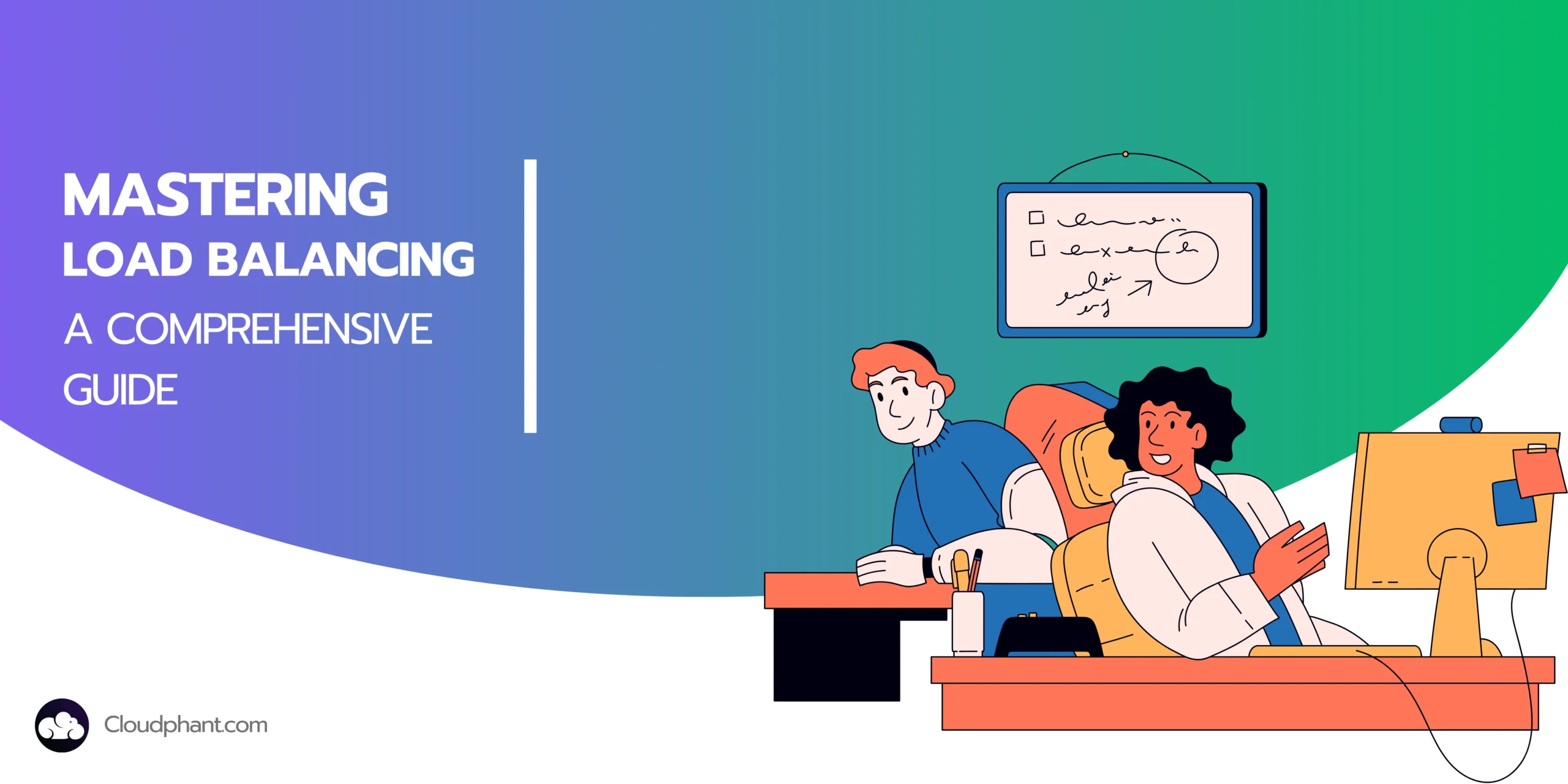What is WordPress REST API?
In today’s digital landscape, integrating diverse platforms and applications seamlessly is crucial for creating cohesive user experiences. The WordPress REST API is a powerful tool that allows developers to interact programmatically with WordPress sites, facilitating robust integrations and advanced functionality. For companies specializing in cloud operations and WordPress hosting, mastering the WordPress REST API is essential to offer cutting-edge solutions that stand out in the competitive market. This comprehensive guide dives deep into the WordPress REST API, exploring its features, benefits, implementation strategies, and best practices.
WordPress powers over 40% of all websites on the internet, making it the most popular content management system (CMS) worldwide. One of the key factors contributing to its widespread adoption is its flexibility and extensibility. The WordPress REST API plays a significant role in this regard by enabling developers to interact with WordPress data in a standardized, programmatic way. Whether you aim to build a decoupled architecture, integrate WordPress with third-party services, or develop mobile applications, the REST API offers the necessary tools to achieve these goals.
Understanding the WordPress REST API:
The WordPress REST API is an interface that allows you to interact with your WordPress site using JSON (JavaScript Object Notation) over HTTP. REST stands for Representational State Transfer, an architectural style that uses standard HTTP methods such as GET, POST, PUT, and DELETE to perform CRUD (Create, Read, Update, Delete) operations. This API provides a programmatic way to manage WordPress content, offering unparalleled flexibility for integrating with other systems and services.
Key Features of the WordPress REST API
- JSON Format: The API utilizes JSON, a lightweight and easy-to-read data format, making it ideal for web and mobile applications.
- HTTP Methods: It leverages standard HTTP methods, which are intuitive for developers familiar with RESTful principles.
- Endpoints and Routes: The API is organized around endpoints and routes, each corresponding to specific WordPress resources like posts, pages, and users.
- Authentication: Secure access is managed through various authentication methods, including cookie authentication, OAuth, and application passwords.
- Extensibility: Developers can create custom endpoints and routes to extend the API’s functionality.
Why Use the WordPress REST API?
Decoupled Architecture:
The REST API enables a decoupled or headless architecture where the front-end and back-end are separated. This allows developers to use WordPress as a content management system (CMS) while building the front-end with modern JavaScript frameworks such as React, Angular, or Vue.js. A decoupled architecture enhances performance, scalability, and flexibility in managing content across multiple platforms.
Mobile and IoT Integration:
The API facilitates the creation of mobile applications and integration with Internet of Things (IoT) devices. By providing a way to access WordPress content from virtually any platform, it allows developers to create dynamic and responsive mobile apps that can interact seamlessly with WordPress.
Improved Performance:
The WordPress REST API can help improve site performance by offloading certain tasks to external systems or microservices. By utilizing the API to handle data retrieval and manipulation, developers can optimize their applications for better speed and efficiency.
Enhanced Flexibility:
Integrating WordPress with other systems such as CRMs, ERPs, and SaaS applications becomes much easier with the REST API. This creates a unified workflow and enhances the overall user experience by ensuring smooth data exchange and synchronization between different platforms.
Getting Started with the WordPress REST API
To effectively use the WordPress REST API, it is essential to understand how to interact with it. Below are some fundamental concepts and practical examples to get you started.
Accessing the API:
The WordPress REST API is accessible at the following base URL:
http://yourdomain.com/wp-json/wp/v2/Replace yourdomain.com with your actual domain. From this base URL, you can access various endpoints to perform different operations.
Fetching Posts:
To retrieve posts, send a GET request to the /posts endpoint. Here’s an example using curl:
curl -X GET http://yourdomain.com/wp-json/wp/v2/posts
curl -X GET http://yourdomain.com/wp-json/wp/v2/posts/1
Creating a Post:
Creating a new post requires sending a POST request to the /posts endpoint with the post data. Authentication is necessary for this operation. Here is an example using the wp-api JavaScript library:
const wp = new WPAPI({ endpoint: 'http://yourdomain.com/wp-json' });wp.posts().create({
title: 'My New Post',
content: 'This is the content of my new post.',
status: 'publish'
})
.then(response => {
console.log('Post created:', response);
})
.catch(error => {
console.error('Error creating post:', error);
});Updating a Post:
To update an existing post, use the PUT method and specify the post ID. Here’s an example:
curl -X PUT -H "Content-Type: application/json" -d '{
"title": "Updated Post Title"
}' http://yourdomain.com/wp-json/wp/v2/posts/1Deleting a Post:
To delete a post, send a DELETE request:
curl -X DELETE http://yourdomain.com/wp-json/wp/v2/posts/1
Authentication Methods in REST API:
Secure API interactions are vital for maintaining the integrity and security of your WordPress site. Below are common authentication methods used with the WordPress REST API:
Cookie Authentication:
Cookie authentication uses the logged-in user’s cookies to authenticate requests. This method is suitable for scenarios where the API is accessed from within the WordPress admin interface.
OAuth:
OAuth is a robust and secure authentication method, ideal for third-party applications that need to access WordPress data. OAuth provides a token-based authentication mechanism, enhancing security and flexibility.
Application Passwords:
Introduced in WordPress 5.6, application passwords offer a simpler alternative to OAuth. Users can generate application-specific passwords from their WordPress profile, which can then be used to authenticate API requests.
Example: Using Application Passwords
First, generate an application password from your WordPress admin panel under “Users > Profile”. Then use it with your API requests:
curl -X POST -u yourusername:yourapppassword -H "Content-Type: application/json" -d '{
"title": "New Post",
"content": "This is the content of the new post.",
"status": "publish"
}' http://yourdomain.com/wp-json/wp/v2/postsPractical Use Cases of REST API:
Headless WordPress:
One of the most compelling use cases for the WordPress REST API is building headless WordPress sites. In this architecture, WordPress serves as the back-end CMS, while the front-end is built using modern JavaScript frameworks. This approach allows for highly interactive and responsive user interfaces, leveraging the flexibility and power of the REST API.
Mobile Applications:
The REST API is instrumental in developing mobile applications that fetch and display WordPress content. For example, a news site or a blog can use the API to deliver content to a mobile app, ensuring a consistent and up-to-date user experience across devices.
Integration with Other Services:
The WordPress REST API simplifies the process of integrating WordPress with other services. For instance, you could connect your WordPress site with a CRM system to automatically add new form submissions as leads or synchronize WordPress content with a third-party e-commerce platform. This seamless integration enhances workflow efficiency and data consistency.
Extending the REST API:
The WordPress REST API is designed to be extensible. Developers can create custom endpoints and routes to meet specific needs. Below is an example of adding a custom endpoint in your theme’s functions.php file:
add_action('rest_api_init', function() {
register_rest_route('custom/v1', '/data', array(
'methods' => 'GET',
'callback' => 'custom_endpoint_callback',
));
});function custom_endpoint_callback($data) {
return new WP_REST_Response('Hello, this is custom data!', 200);
}This example demonstrates how to register a new route (/data) under the custom/v1 namespace and define a callback function that returns custom data.
Best Practices for Using the WordPress REST API:
Security:
- Use HTTPS: Always use HTTPS to encrypt data transmitted between the client and server. This prevents interception and man-in-the-middle attacks.
<VirtualHost *:80>
ServerName yourdomain.com
Redirect permanent / https://yourdomain.com/
</VirtualHost>
- Authentication: Utilize robust authentication methods. For most applications, application passwords or OAuth are recommended.
curl -X POST -u yourusername:yourapppassword -H "Content-Type: application/json" -d '{
"title": "New Post",
"content": "This is the content of the new post.",
"status": "publish"
}' https://yourdomain.com/wp-json/wp/v2/posts- Rate Limiting: Implement rate limiting to prevent abuse and potential denial-of-service (DoS) attacks. This limits the number of requests a user can make in a given time frame.
nginx:
http {
limit_req_zone $binary_remote_addr zone=api_limit:10m rate=30r/m;
server {
location /wp-json/ {
limit_req zone=api_limit burst=10 nodelay;
proxy_pass http://localhost:8080;
}
}
}- Validation and Sanitization: Always validate and sanitize inputs to prevent injection attacks and ensure data integrity.
add_action('rest_api_init', function() {
register_rest_route('custom/v1', '/data', array(
'methods' => 'POST',
'callback' => 'custom_endpoint_callback',
'permission_callback' => function() {
return current_user_can('edit_posts');
}
));
});function custom_endpoint_callback($request) {
$param = sanitize_text_field($request->get_param('custom_param'));
// Process the sanitized parameter
return new WP_REST_Response('Processed custom_param: ' . $param, 200);
}Performance:
- Caching: Implement caching strategies to reduce server load and improve response times.
function get_custom_data() {
$cached_data = get_transient('custom_data_cache');
if (false === $cached_data) {
$data = fetch_expensive_data();
set_transient('custom_data_cache', $data, 12 * HOUR_IN_SECONDS);
return $data;
}
return $cached_data;
}- Efficient Queries: Optimize database queries to minimize overhead.
function optimized_query() {
global $wpdb;
$results = $wpdb->get_results(
$wpdb->prepare("SELECT * FROM $wpdb->posts WHERE post_status = %s", 'publish')
);
return $results;
}- Pagination: Use pagination for large data sets to avoid overwhelming the server.
curl -X GET "https://yourdomain.com/wp-json/wp/v2/posts?per_page=10&page=2"
DOCUMENTATION:
Clear and comprehensive documentation is essential for maintainability and ease of use.
- API Endpoints: Document all available endpoints, their methods, parameters, and expected responses.
- Examples: Provide examples of common use cases and API interactions.
- Error Codes: Include a list of error codes and their meanings.
Error Handling:
- Consistent Error Responses: Return consistent error formats to make it easier for clients to handle errors.
function custom_error_response($message, $status_code = 400) {
return new WP_REST_Response(array(
'message' => $message,
'status' => $status_code,
), $status_code);
}function custom_endpoint_callback($request) {
if (!isset($request['required_param'])) {
return custom_error_response('Missing required parameter', 400);
}
// Continue processing
return new WP_REST_Response('Success', 200);
}- Detailed Error Messages: Provide detailed error messages to help developers understand what went wrong.
- Logging: Implement logging for API requests and errors to facilitate monitoring and debugging.
function log_api_request($request) {
if (is_wp_error($request)) {
error_log('API Error: ' . $request->get_error_message());
}
}
add_action('rest_api_init', 'log_api_request');Versioning:
- URI Versioning: Include the version number in the endpoint URI.
curl -X GET "https://yourdomain.com/wp-json/wp/v2/posts"
- Deprecation: Clearly communicate deprecated endpoints and provide migration paths.
- Changelog: Maintain a changelog documenting all changes, additions, and deprecations.
Extensibility
- Custom Endpoints: Create custom endpoints for specific functionality.
add_action('rest_api_init', function() {
register_rest_route('custom/v1', '/data', array(
'methods' => 'GET',
'callback' => 'custom_endpoint_callback',
));
});- Filters and Actions: Use WordPress hooks to modify existing endpoints and responses.
add_filter('rest_prepare_post', 'modify_post_response', 10, 3);
function modify_post_response($response, $post, $request) {
$response->data['custom_field'] = get_post_meta($post->ID, 'custom_field', true);
return $response;
}- Reusability: Write modular and reusable code to facilitate easier maintenance and updates.
Conclusion
The WordPress REST API unlocks a realm of possibilities for developers, allowing them to create dynamic, scalable, and secure applications that interact seamlessly with WordPress. By understanding the core principles, implementation strategies, and best practices outlined in this guide, you can leverage the full potential of the REST API to enhance your projects and deliver superior solutions. Whether you’re building headless websites, mobile applications, or integrating with third-party services, the WordPress REST API provides the flexibility and power needed to succeed in today’s interconnected digital landscape.
Embrace the capabilities of the WordPress REST API, follow best practices, and explore innovative ways to integrate and extend your WordPress site. The journey towards mastering the REST API not only enhances your technical skill set but also opens up new avenues for creating sophisticated and efficient web solutions.
Recent Post
Mastering Load Balancing for Optimal WordPress…
Enhance your WordPress site's performance and reliability…
Cross-Site Scripting (XSS): A Comprehensive Guide
Discover the ins and outs of Cross-Site…
Understanding Web Application Firewall (WAF)
Explore Web Application Firewalls (WAFs): how they…




2 Replies to “What is WordPress REST API?”